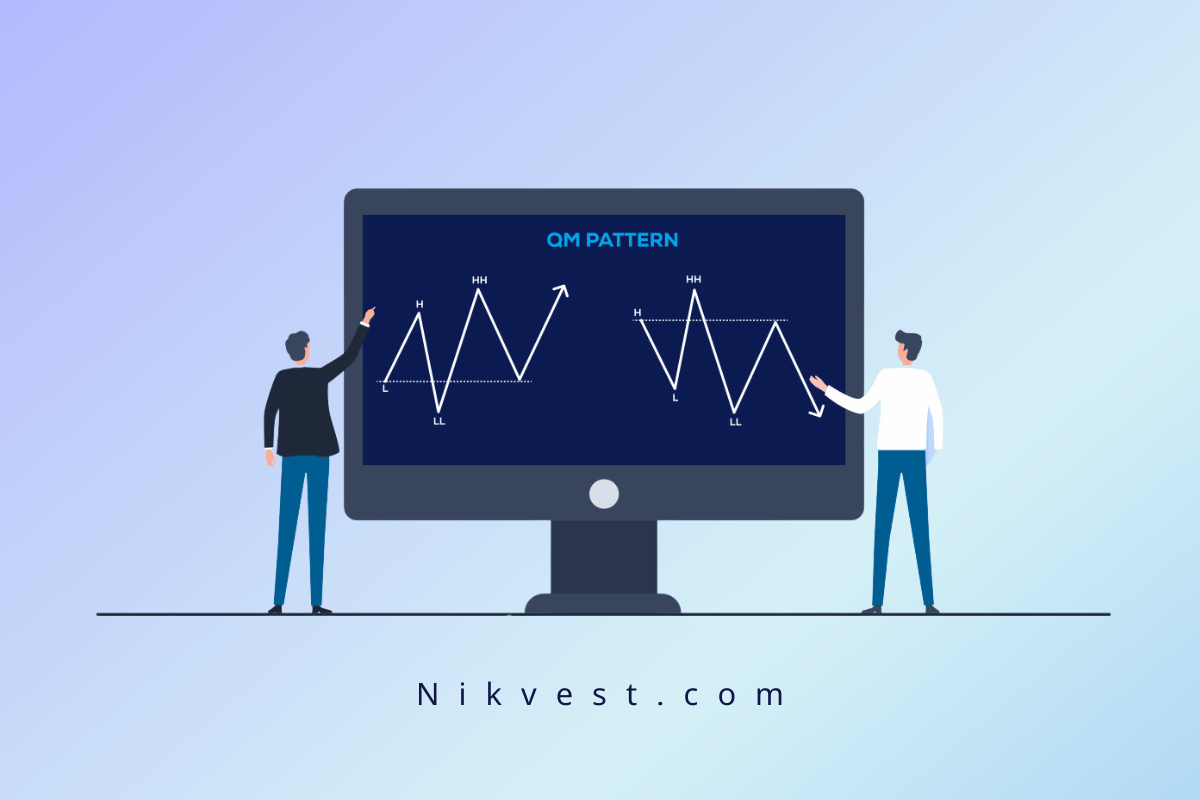Triple Moving Average Strategy
In technical analysis, moving averages are indispensable tools for traders who want to identify trends and make data-driven decisions. One of the most effective moving average techniques is the Triple Moving Average Strategy (TMAS). This strategy refines market analysis by utilizing three different moving averages, each representing a unique time frame. The combination of these moving averages helps traders confirm market direction, identify momentum shifts, and signal entry and exit points more accurately. In this article, we will explore the ins and outs of the Triple Moving Average Strategy, how it works, and how it can be applied effectively in various financial markets.
What is a Moving Average?
Before diving into the Triple Moving Average Strategy, it’s important to understand the concept of a moving average (MA). A moving average is a calculation that helps smooth price data by creating a constantly updated average of prices over a set number of periods. By doing so, it reduces the impact of short-term fluctuations and allows traders to focus on the overall trend of the market.
There are different types of moving averages, each with its own way of calculating the average price:
- Simple Moving Average (SMA): The most basic type, the SMA, is calculated by taking the average of the closing prices over a specific number of periods. Each period is weighted equally. For example, a 20-day SMA calculates the average closing price over the last 20 days.
- Exponential Moving Average (EMA): Unlike the SMA, the EMA gives more weight to recent prices, making it more responsive to new data. Traders often prefer EMAs for shorter time frames or markets with high volatility, as they provide signals faster than SMAs.
Moving averages help traders identify trends. When prices are above the moving average, the market is considered to be in an uptrend. Conversely, when prices are below the moving average, the market may be in a downtrend. But, when used alone, moving averages can sometimes give false signals. This is where combining multiple moving averages comes into play, leading to the Triple Moving Average Strategy.
How the Triple Moving Average Strategy Works
The Triple Moving Average Strategy uses three different moving averages, typically of varying lengths: short-term, medium-term, and long-term. By using three different time frames, traders gain a more comprehensive view of the market’s direction and momentum.
The strategy typically employs the following moving average timeframes:
– Short-term moving average: 5–10 periods
– Medium-term moving average: 20–50 periods
– Long-term moving average: 100–200 periods
The core idea is to analyze the interactions between these moving averages. When the short-term average crosses above the medium- and long-term averages, it signals a potential bullish trend, indicating a buying opportunity. When the short-term average crosses below the others, it signals a potential bearish trend, indicating a selling opportunity. The medium- and long-term averages serve as additional confirmation of the trend, reducing the likelihood of false signals.
Key Components of the Triple Moving Average Strategy
To successfully implement the Triple Moving Average Strategy, it’s essential to understand its key components:
- Trend Identification: The primary goal of the Triple Moving Average Strategy is to identify the current trend of the market. The relationship between the short-term, medium-term, and long-term moving averages gives a clearer picture of whether the market is in an uptrend, downtrend, or sideways movement. For instance, if all three moving averages are pointing upward, the market is in a strong uptrend.
- Entry Signals: A buy signal occurs when the short-term moving average crosses above the medium- and long-term moving averages. This indicates that upward momentum is increasing, and the market is likely to continue moving higher.
- Exit Signals: Conversely, a sell signal occurs when the short-term moving average crosses below the medium- and long-term moving averages. This indicates weakening upward momentum or the start of a downtrend, signaling traders to exit their positions.
- Confirmation: To avoid false signals, traders often look for all three moving averages to be aligned in the same direction. This alignment provides confirmation that the trend is strong and is less likely to reverse unexpectedly.
Setting Up the Moving Averages: Short, Medium, and Long-Term
To effectively use the Triple Moving Average Strategy, traders must carefully select the timeframes for each moving average. The standard setup usually includes:
– Short-term moving average: 10-period Exponential Moving Average (EMA)
– Medium-term moving average: 50-period EMA
– Long-term moving average: 200-period EMA
This combination is widely used because it balances responsiveness with stability. The short-term EMA responds quickly to recent price changes, while the long-term EMA provides a more stable view of the overall trend. The medium-term EMA helps bridge the gap between the two, making it easier to confirm market direction.
Depending on the market and trading style, traders may choose different timeframes. For example, day traders might use shorter timeframes (e.g., 5, 15, and 30 periods), while swing traders might prefer longer timeframes (e.g., 20, 50, and 100 periods).
How to Use the Triple Moving Average for Entry and Exit Signals
The Triple Moving Average Strategy generates trading signals based on the crossings of the three moving averages. Here’s how traders typically use it:
Buy Signal
A buy signal is generated when the short-term moving average crosses above both the medium- and long-term moving averages. This indicates that momentum is building to the upside, and the market may be entering an uptrend. Traders can enter long positions at this point, expecting the price to continue rising.
– Example: A trader is analyzing a stock with 10-, 50-, and 200-period EMAs. When the 10-period EMA crosses above the 50- and 200-period EMAs, the trader enters a long position, anticipating a bullish trend.
Sell Signal
A sell signal is generated when the short-term moving average crosses below the medium- and long-term moving averages. This indicates that momentum is weakening, and the market may be entering a downtrend. Traders can exit their long positions or open short positions at this point.
– Example: Using the same stock, when the 10-period EMA crosses below the 50- and 200-period EMAs, the trader exits their long position, locking in profits before the downtrend begins.
In addition to using moving average crossovers for signals, traders may also look at other indicators such as RSI or MACD to confirm the strength of the signal and avoid false breakouts.
Advantages of Using the Triple Moving Average Strategy
The Triple Moving Average Strategy offers several key benefits that make it popular among traders:
- Noise Reduction: By using three moving averages instead of one or two, traders can filter out false signals caused by market noise, especially in volatile conditions. The long-term moving average helps smooth out price fluctuations, providing a clearer trend signal.
- Improved Trend Identification: The combination of short-, medium-, and long-term moving averages allows traders to identify trends more accurately. The short-term average provides early signals, while the long-term average confirms the overall trend direction.
- Flexibility Across Markets: This strategy can be applied to various markets and asset classes, including stocks, forex, commodities, and cryptocurrencies. Whether you’re trading on a daily, weekly, or even hourly chart, the Triple Moving Average Strategy can be adapted to different timeframes and markets.
- Better Timing of Entries and Exits: The strategy helps traders time their entries and exits more effectively by providing a clearer view of when trends are gaining or losing strength. This can help traders avoid entering trades too early or too late, thereby improving overall profitability.
Common Mistakes to Avoid with Moving Average Strategies
Although the Triple Moving Average Strategy is effective, traders must be cautious of certain pitfalls:
- Relying Solely on Moving Averages: Moving averages are lagging indicators, meaning they reflect past price movements and may not always capture sudden market reversals. Traders should avoid using moving averages as their only tool for making decisions. It’s essential to combine this strategy with other indicators, such as volume analysis, candlestick patterns, or momentum oscillators, to get a more complete picture.
- Ignoring Market Conditions: The Triple Moving Average Strategy works best in trending markets. In a sideways or choppy market, moving averages may produce frequent false signals, causing traders to enter and exit trades too often. In such cases, it’s crucial to wait for clear breakouts before taking action.
- Using Inappropriate Timeframes: The timeframes for the moving averages should match your trading style and the market being traded. Using too short or too long timeframes can give misleading signals. For example, a day trader might find little value in using a 200-period EMA, while a long-term investor might find a 5-period EMA too reactive.
- Overtrading: One of the risks of moving average strategies is that traders can be tempted to overtrade, especially when the moving averages are frequently crossing. To avoid this, focus on trades where all three moving averages are clearly aligned in the same direction.
Customizing the Triple Moving Average for Different Markets
The versatility of the Triple Moving Average Strategy allows it to be adapted for different asset classes and markets. However, every market has its own characteristics, and the timeframes used in one market might not work as well in another.
Stock Market
Stocks generally exhibit longer-term trends, making the Triple Moving Average Strategy particularly effective. Many stock traders use 50-period and 200-period SMAs or EMAs to spot long-term trends. Shorter-term moving averages, such as 10- or 20-period EMAs, are used to capture shorter-term price movements.
Forex Market
The forex market is known for its liquidity and high volatility, which means prices can change rapidly within short timeframes. In this environment, shorter-term moving averages are more commonly used. For example, a forex trader might use a 5-period EMA for the short term, a 20-period EMA for the medium term, and a 50-period EMA for the long term. This helps capture the swift price movements typical in forex trading while still maintaining the ability to filter out noise and false signals.
Forex traders benefit from the Triple Moving Average Strategy by being able to react quickly to changes in trend direction while still relying on the confirmation of longer-term moving averages. This is particularly useful when trading highly volatile currency pairs like GBP/USD or EUR/JPY, where sharp reversals can occur frequently.
Cryptocurrency Market
Cryptocurrency markets are even more volatile than forex markets, with significant price fluctuations occurring within minutes or hours. This volatility makes the Triple Moving Average Strategy an ideal tool for navigating the crypto space. Traders in this market may prefer to use even shorter timeframes, such as a 5-period EMA for the short term, a 15-period EMA for the medium term, and a 50-period EMA for the long term.
In the case of highly volatile cryptocurrencies like Bitcoin or Ethereum, a quicker reaction time is critical. The short-term EMA can help spot rapid trend changes, while the medium- and long-term EMAs confirm whether the move has enough strength to follow through. This minimizes the risk of being whipsawed by short-term volatility and false breakouts.
Additionally, due to the extreme volatility of crypto, combining the Triple Moving Average Strategy with other indicators like the Relative Strength Index (RSI) or the Moving Average Convergence Divergence (MACD) can further reduce the risk of false signals.
Triple Moving Average vs. Other Moving Average Strategies
The Triple Moving Average Strategy offers distinct advantages over simpler moving average strategies, such as the Single Moving Average or Double Moving Average (Golden Cross/Death Cross) strategies.
Single Moving Average Strategy
A single moving average, such as a 50-period or 200-period SMA or EMA, provides a basic indication of the trend. While useful, it often lags behind the price action and can result in delayed signals. For example, a trader using a single 200-period EMA might miss a trend change that occurred earlier, resulting in a less favorable entry or exit point.
With the Triple Moving Average Strategy, traders receive more timely signals. The short-term moving average reacts more quickly to price changes, providing earlier signals for trend reversals, while the medium- and long-term averages confirm the overall trend.
Double Moving Average Strategy (Golden Cross/Death Cross)
The Golden Cross (a bullish signal) occurs when a short-term moving average crosses above a long-term moving average, while the Death Cross (a bearish signal) occurs when the short-term moving average crosses below the long-term average. This strategy is often used with a 50-period and 200-period moving average and provides basic signals of trend direction.
However, the Double Moving Average Strategy can sometimes lead to false signals, especially in sideways or choppy markets. The Triple Moving Average Strategy offers a more refined approach by incorporating a third moving average, which acts as an additional layer of confirmation. This reduces the likelihood of entering trades based on short-term price movements that don’t reflect the true trend direction.
Overall, the Triple Moving Average Strategy strikes a balance between responsiveness and stability, making it a more comprehensive tool for trend-following traders.
Examples of the Triple Moving Average in Action
Let’s walk through a practical example to see how the Triple Moving Average Strategy can be applied in real-world trading:
Example in Forex: EUR/USD
A trader is analyzing the EUR/USD currency pair using 10-, 50-, and 200-period EMAs on the daily chart. Over the course of several days, the 10-period EMA crosses above the 50-period EMA, signaling the beginning of an uptrend. A few days later, the 10-period EMA crosses above the 200-period EMA, providing further confirmation that the uptrend is gaining strength.
The trader enters a long position at this point, confident that the alignment of the three moving averages signals a strong bullish trend. As the trend progresses, the 10-period EMA remains above the 50- and 200-period EMAs, confirming that the uptrend is intact.
Several weeks later, the 10-period EMA crosses back below the 50-period EMA, indicating that the uptrend is losing momentum. The trader exits the long position, locking in profits before the 10-period EMA crosses below the 200-period EMA and signals the beginning of a downtrend.
Example in Cryptocurrencies: Bitcoin (BTC/USD)
In this example, a trader is analyzing Bitcoin (BTC/USD) using 5-, 20-, and 50-period EMAs on the 4-hour chart. The 5-period EMA crosses above the 20- and 50-period EMAs, signaling the start of a short-term uptrend. Given the volatility of Bitcoin, the trader enters a long position to capitalize on the momentum.
As the price continues to rise, the 5-period EMA stays above the 20- and 50-period EMAs, confirming the strength of the uptrend. However, after several days, the 5-period EMA crosses below the 20-period EMA, providing an early indication that the bullish trend may be coming to an end.
To reduce risk, the trader closes the position, securing profits before the 5-period EMA crosses below the 50-period EMA and confirms the start of a new downtrend.
These examples illustrate how the Triple Moving Average Strategy can be applied across different markets and timeframes to identify trends and manage trades more effectively.
Best Markets for Implementing the Triple Moving Average Strategy
The Triple Moving Average Strategy is highly adaptable and can be used in various markets, including:
- Forex: Due to its high liquidity and frequent trend changes, forex is one of the best markets for the Triple Moving Average Strategy. The strategy works particularly well in trending currency pairs such as EUR/USD, GBP/USD, and USD/JPY.
- Stocks: Stock markets tend to trend more consistently over longer periods, making this strategy suitable for identifying long-term trends in individual stocks or stock indices like the S&P 500. The strategy is also effective for swing trading in stocks.
- Commodities: The strategy can be applied to commodity markets like gold, oil, and silver, which often exhibit strong, directional trends over time. Traders can use the Triple Moving Average Strategy to ride these trends while minimizing the impact of market noise.
- Cryptocurrency: The extreme volatility of cryptocurrencies like Bitcoin, Ethereum, and altcoins makes the Triple Moving Average Strategy an excellent tool for identifying quick trend shifts while avoiding false signals caused by short-term price swings.
Conclusion: Maximizing Profits with the Triple Moving Average Strategy
The Triple Moving Average Strategy is a powerful, flexible tool that can help traders capture trends while reducing market noise. By using three moving averages of varying lengths, traders can receive more timely signals for entering and exiting trades, as well as confirm the strength and direction of market trends.
This strategy is adaptable across various markets, including forex, stocks, commodities, and cryptocurrencies. However, like any strategy, it should be used in conjunction with other indicators and analysis tools to maximize effectiveness. When applied correctly, the Triple Moving Average Strategy can significantly improve your ability to identify trends, time trades more effectively, and ultimately, maximize profits.
By customizing the timeframes of your moving averages and combining them with other technical analysis tools, you can tailor the strategy to fit your individual trading style and the unique characteristics of the market you are trading.




















































